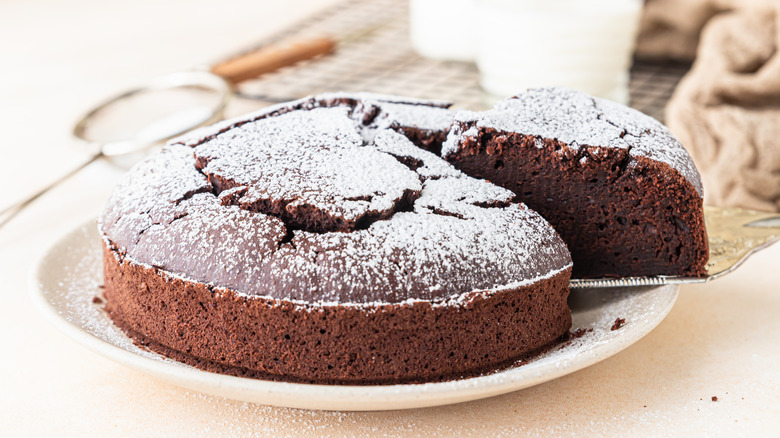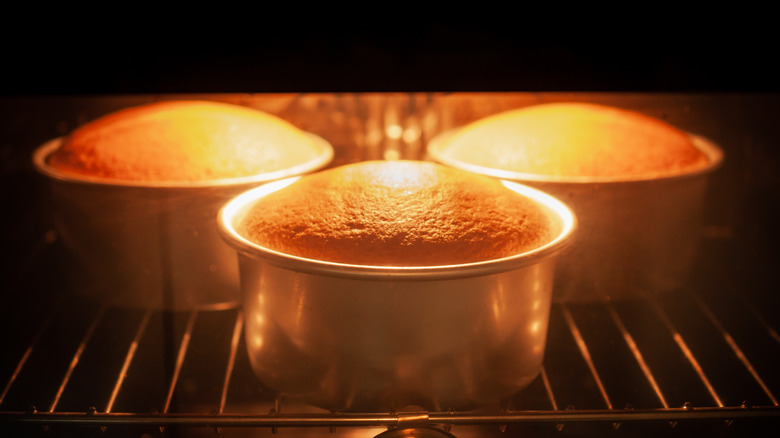Dome-Shaped Cake? Here's What You Did Wrong
You're in the mood to enjoy a nice, rich piece of cake, or perhaps you just want to surprise someone with a delicious homemade cake when they come home. It may be something as complex as a two-layered chocolate cake with salted caramel between the layers and topped with toasted pecans, or it could be as simple as opening a box of Betty Crocker and using some Pillsbury frosting. After an hour and a half of mixing, pouring, layering, and baking, you hear the ding of the oven, and you quickly open the door to pull out your long-awaited treat, only to discover an unfortunate result. Rather than the picture-perfect flat top you were expecting, you're met with a "dome"-like cake, the risen center of the cake covered in large cracks, breaks, and unsightly bubbles.
While this is a minor setback and can be fixed with a layer or two of frosting, it's still an unpleasant sight to see that your hard work has resulted in a craggy, broken mess. What exactly causes this to happen to your otherwise normal cake? According to Mary Berry of "The Great British Bake Off," the reason is due to either an excessively high oven temperature or a pan on the wrong rack. Fortunately, there are many ways to help prevent your cakes from cracking and doming, allowing you to keep that perfect flat top.
Why your cake cracks and how you can prevent it
As Mary Berry stated on her website, an overly high temperature and incorrect placement of your cake pan can be the cause of your cracked cake top. The high heat of the oven forces the exterior of the cake to bake and form the crust faster, even though the interior of the cake hasn't fully risen. As the interior finishes rising, it breaks the now-firm top of the cake, resulting in those sprawling cracks and domes you see when you take it out of the oven. Aside from simply lowering your oven temperature, there are other ways you can prevent doming.
Food & Wine suggests wrapping using an "even-bake strip," which is made from cotton and polyester and designed to help slow the rapid cooking of the exterior. In a pinch, they also say a damp towel around your cake pan will work just as fine. Food52 also points to even-bake strips but also suggests minimizing the number of times you open the oven to prevent fluctuating temperature. A unique suggestion they give involves putting a pan full of water into the oven alongside your cake. This is known as a water bath – it provides an extra source of heat that is more even and helps ensure the interior of the cake is cooking just as fast as the exterior.
Regardless, while the final product may be cracked or smooth, there is no denying there's nothing like digging into the first bite of a warm, moist cake.

